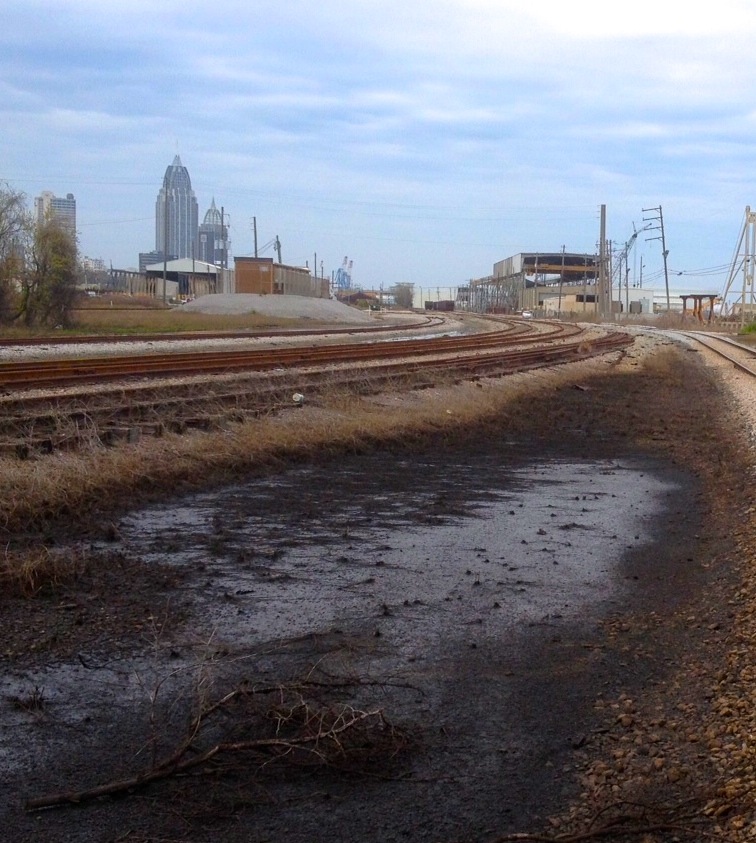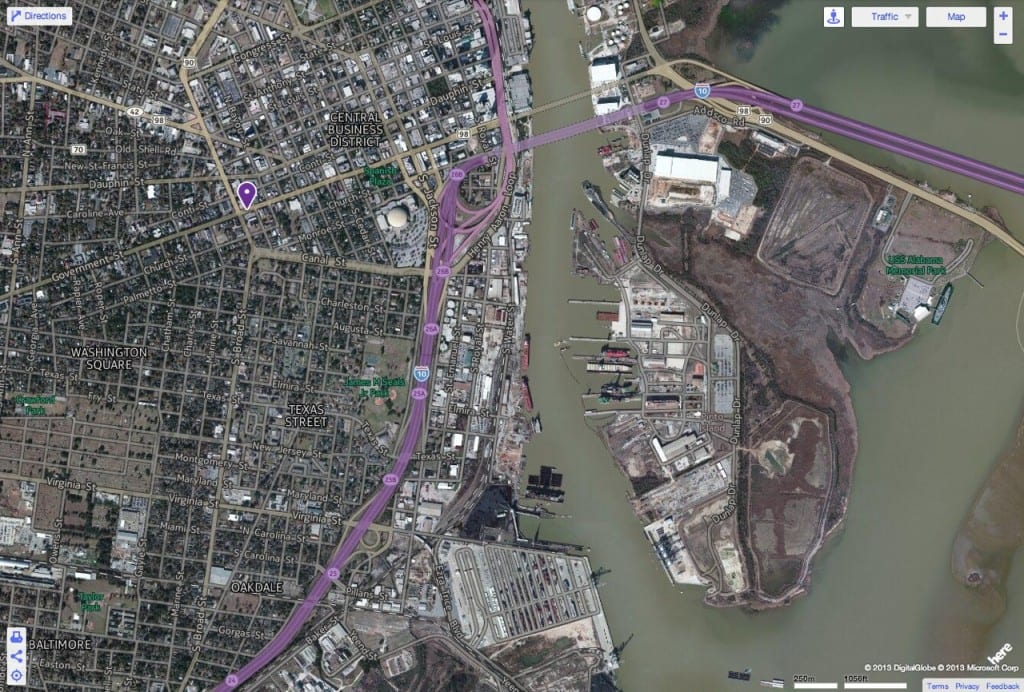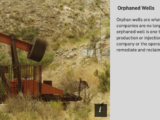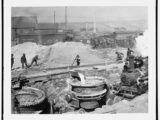By David Underhill –
MOBILE, Ala. – The video to show how foggers work to suppress coal dust didn’t work. An engineer pitching a coal terminal to the Mobile planning commission on March 20 had the opening scene of the video on a screen looming over the big crowd at the meeting to decide if the project can proceed. The video was supposed to show streams of coal rushing along conveyor belts and chutes with no dust escaping. Mist from sprayers would capture the microscopic coal particles in the tiny water droplets, preventing dust from wafting into the city.
If the actual equipment works better than the video, which just sat there stuck on the starting picture. That has been the question troubling doubters and opponents of the downtown Mobile coal port proposed by the Blue Creek division of Walter Energy, a mega mining outfit headquartered upstate in Birmingham.
For months the terminal has been shuffling on and off the planning commission’s agenda as agitated residents of nearby neighborhoods flocked to complain, the commissioners turned skittish, and Blue Creek itself requested a delay.
But that was just a tactical retreat before the final charge. Local squawks about coal dust in homes and schools and lungs were not going to stop a scheme planned for years with the backing of the state’s economic and political Big Mules, as they have been named while trodding through history.
The coal would come from Blue Creek mines in north Alabama. That’s jobs plus contracts for equipment and services up there. Then it would be barged to Mobile. More jobs and contracts. Then it would be unloaded at the new terminal for reloading onto export ships. More jobs and contracts. To lubricate this process the state government has squirted multiple tax exemptions on the company’s mines and the city of Mobile has added some for the terminal. These anointings total many millions of dollars.
Dusty Diapers
Arrayed against these powers were mere citizens armed with petitions, diapers, and carefully researched objections. About 1,600 signed petitions saying they were already assaulted by coal dust blowing off a giant port authority coal terminal and they do not want more coming from Blue Creek’s new one which would be even closer to their homes. These include modest mostly black communities and others with astonishing Gone With the Windish mansions. Neighborhood and historic preservation associations had mobilized members to swipe diapers (or any white cloth) across their homes and bring these, besmirched with coal dust, to show the planning commission. None of this made any difference.
Blue Creek hired a consultant with glitzy academic credentials to study the likely airborne emissions from the coal terminal. He compared them to current total emissions of micro particles from the whole county: vehicles, construction, steel mills, chemical plants, coal and gas fired electric plants, everything. And he discovered that dust from his employer’s facility would be a tiny fraction of this countywide total.
This study assumed the dust-suppression equipment touted by Blue Creek would all be installed and would work better than the stuck video depicting it. The protestors doubted this and also doubted the relevance of data about the entire county. Their concern was plumes of coal dust descending on neighborhoods in the immediate vicinity of the terminal. None of this made any difference either.
Skeptics and cynics noted a recent decision by the planning commission about a proposed cell phone tower in a suburban sector. A few dozen homeowners complained, and the commission refused to approve the tower. Pointing out the contrast between official treatment of the tower and of the terminal made no difference.
Opportunity Cost
Besides jobs, jobs, jobs, Blue Creek said taxes. About a quarter million dollars a year would come to local coffers from the terminal the company claimed.
A downtown coffee shop operator told the commission his small business alone collects about that amount in annual sales taxes. He considers the coal terminal a threat to his shop and hence to those tax receipts. Others raised similar questions about opportunities lost when you choose to invite one type of activity that crowds out or repels others.
Airbus is erecting a commercial jet assembly plant just west of the coal terminal site. And a large shipyard is building commercial and naval vessels on the east bank of the river across from the site. Will they be pleased to see this terminal’s mountains of coal rising between them and coal dust blowing toward them? How many jobs and taxes will be sacrificed because business refrains from expanding or locating among the coal alps of coastal Alabama? Posing such questions made no difference.
If there must be a new terminal handling millions of tons of coal every year, why must it be on the downtown waterfront? An industrial canal on the southern edge of the city accommodates oceangoing ships. Why can’t the coal barges from upstate continue past downtown and unload at a terminal on that canal? Posing these questions made no difference either.
City Gives Itself Lump of Coal
The likely outcome is a riveting addition to the scene from I-10 approaching Mobile, the first real city on the Gulf Coast eastward from New Orleans. Now the most prominent welcoming feature is the metro jail, a complex with the aspect of a medieval dungeon right beside the highway. Complementing this grim edifice will be a pair of coal heaps 80-90 feet high at the new terminal. Then a large domed municipal auditorium that’s often empty. Then a cruise ship terminal without a ship but one is always just about to come in, the promoters swear. Then a shell of a combination maritime museum and ferry terminal with neither displays nor ferries. Then a cavernous convention center hosting few conventions.
But the city is business friendly, according to the mayor and his allies. It doesn’t impose rules and restrictions that hinder projects like the coal terminal. And that is what’s important. Repeat frequently enough to clog thought: “business friendly.”
The planning commission barely had a voting quorum last week. Almost half the members stayed away or abstained from the coal terminal vote perhaps because they knew how much the public was aroused against it, while also knowing what other quarters expected of the commission. Of the members voting, four approved the coal terminal and two opposed.
Officially the city council will have the last word in a few weeks. Only incurable optimists expect them to reverse the planning commission’s decision. Commission members are appointed by the mayor and the council, and the commissioners reflect these politicians who appointed them. Discord between the two bodies is rare.
Terminal Condition
When the coal terminal receives the city council’s assent a pattern will repeat. Other projects in the area have been churning through a similar process. Somebody afar concocts plans with major local impact. Alleged governing bodies—elected and administrative—begin working quietly with these somebodies to advance the plans. Eventually the impacted locals sniff some part of the scheme. An uproar ensues, along with a scurrying search for information. Anxious or angry citizens confront officials, many of whom are already members of the schemers’ team. And when the time arrives for a final decision, these officials vote with the team, not with the people they supposedly represent.
The pattern has been evident in the Mobile area about trains bringing Canadian tar sands, new pipelines for this and other types of crude oil, tank farm expansions, and now a coal terminal. All of these episodes display local officials functioning as representatives of distant interests, not of the folks living where these officials preside.
Close inspection would probably reveal similar patterns across the country and beyond.
That’s a panoramic scene of local government as incapacitated as the dust control video at the planning commission meeting. It means that the standard procedures of supposed self-government can’t cope with the Mobile coal terminal, nor with equivalent schemes elsewhere. Self-government will be revived when the ladies of the historic preservation society go down to the construction site and chain themselves to the bulldozers.















